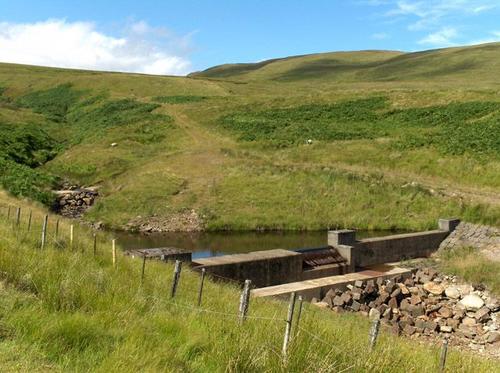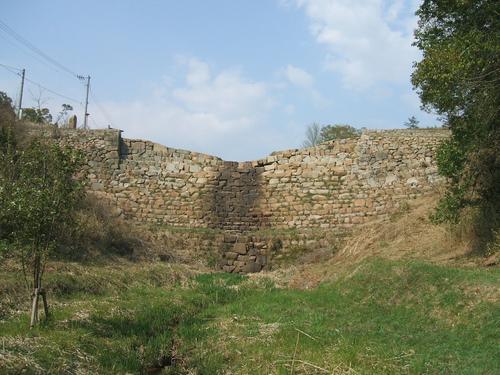Surface dams
Small earth and stone dams
Rainwater storage systems such as small dams in Ethiopia and Tanzania (known as ndivas), are communally constructed around footslopes of hills or along irrigation canals to store the runoff from ephemeral or perennial rivers. The reservoirs have neither plastered walls nor covered surfaces. The water is mostly used communally for livestock consumption, and for supplementary irrigation. Ndivas are suitable for areas with 300 – 600 mm of rainfall. (Mekdaschi & Liniger 2013)
Check dams
A check dam is a small, temporary or permanent dam constructed across a drainage ditch, swale, or channel to lower the speed of concentrated flows for a certain design range of storm events. A check dam can be built from logs of wood, stone, pea gravel-filled sandbags or bricks and cement. The purpose is mainly to reduce runoff velocity but also to allow groundwater recharge and sediment to settle. Furthermore check dams are used to reduce erosion and prevent gully formation during floods. The sides of the check dam must be higher than the centre so that water is always directed over the centre of the dam (this avoids the dam being outflanked by the flow). Check dams should be checked for sediment accumulation after each significant rainfall. Sediment should be removed when it reaches one-half of the original height or before. (Ruffino 2009) The length of the check dam depends on the gully width while the spacing between adjacent check dams is determined based on the availability of water and a potential land that can be irrigated. (Mekdaschi & Liniger 2013)
Rock catchment masonry dams
These dams are common practice in several countries in Sub-Saharan Africa. In the case of large rock catchments, cement and stone gutters are used to extend the catchment area to gather runoff from a severalhectare sized catchment. The storage structure is either a dam or a tank situated adjacent to a rock catchment. The reservoir should have a relative high depth to surface ratio to minimize evaporation. A major advantage of rock catchment systems is that there is little water loss through seepage. Water collected in rock catchment dams is often extracted for domestic and livestock consumption or supplementary irrigation. (Mekdaschi & Liniger 2013)

